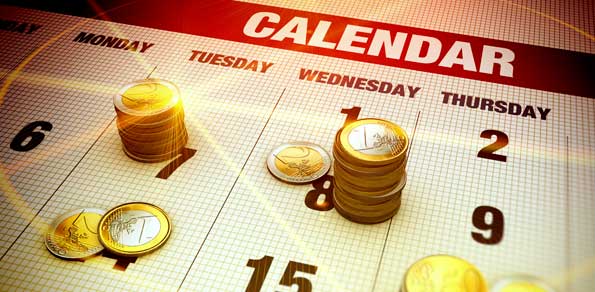No one can undermine the importance of a forex calendar to a foreign currency trader. In fact, every dyed-in-the-wool forex trader cannot do without it. They are always on the lookout for clues on when the market can possibly go ballistic. To them, volatility breeds plenty of trading opportunities. While most conservative traders would normally prefer quieter, more stable markets, hard core forex traders are the exact opposites. They are constantly looking for more volatility in the markets because that is where plenty of profitable trading opportunities can be found. That is why trading the news as they are released (particularly those that impact the supply and demand balance) has become very much a part of every forex trader’s life.
You would be hard put to look for a forex trader who initiates a trade without first consulting his forex calendar. An economic calendar is an indispensable tool and an integral part of every trader’s trading arsenal. It contains the schedule of when and at what time various key economic indicators of major countries will be released. What a trader essentially looks for on a forex calendar are possible market moving reports that may impact currency price movements profoundly. He constantly tailors his trades around such breaking news announcements in anticipation of a favorable market reaction which can deliver pips to his account fast.
And, since the U.S. Dollar remains the dominant currency to date, traders often give more weight to and anticipate the release of key economic indicators reflecting the U.S. economy. What adds up to the market volatility is the fact that no one really knows what the news will be before they are even announced or published. Ergo, nobody can really forecast the future price movements with 100% accuracy. And even if anyone knows what the news will be ahead of time, he still wouldn’t know how the market will react to it.
Quite often, traders build up positions on both sides of the market as the countdown on the announcement of the news begins. Those who believe the upcoming news will negatively impact the market will normally add up more short positions. On the other hand, those who think the forthcoming news will have a positive influence on the market would beef up their longs. Positions start to build up on both sides such that when the news finally arrives and the market starts heading in one particular direction, those on the wrong side start running for cover by liquidating positions, thus highlighting the particular price movement after the news all the more. In the end, it is the direction chosen by the majority that prevails.
In trading the news therefore, it is not so much on whether the released report is positive or negative to a particular currency. What matters most is how the majority of the traders view said reports. If trading the news without using the forex calendar would be like trading the market with blindfolds, then trading the market giving mind to the underlying sentiment of the majority would be like jumping out of an airplane without a parachute.


